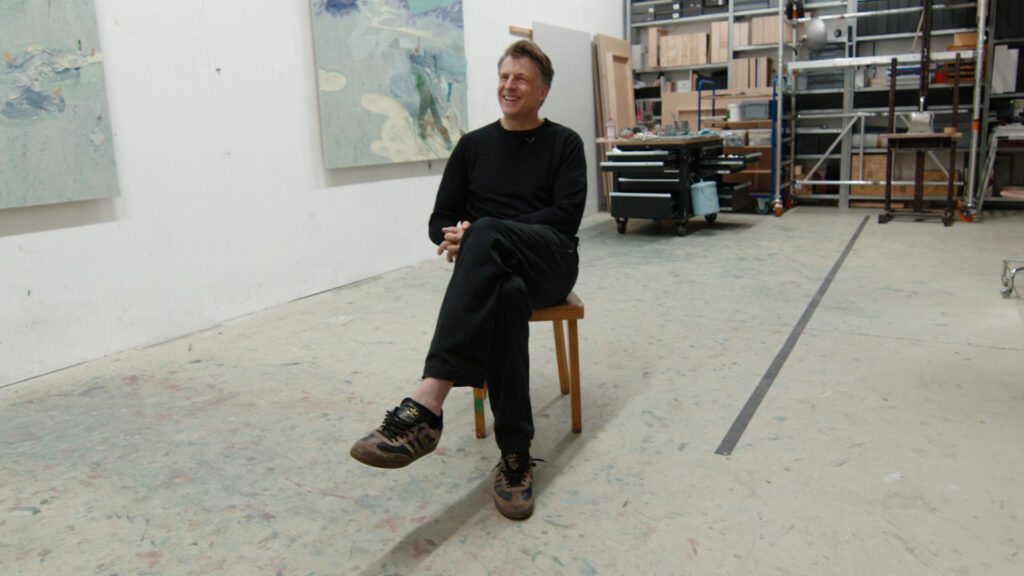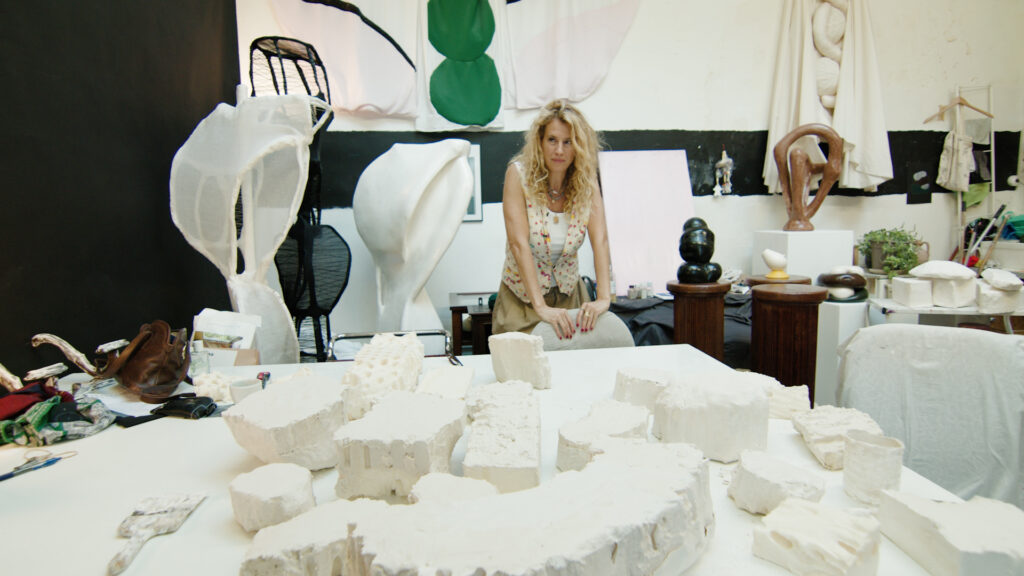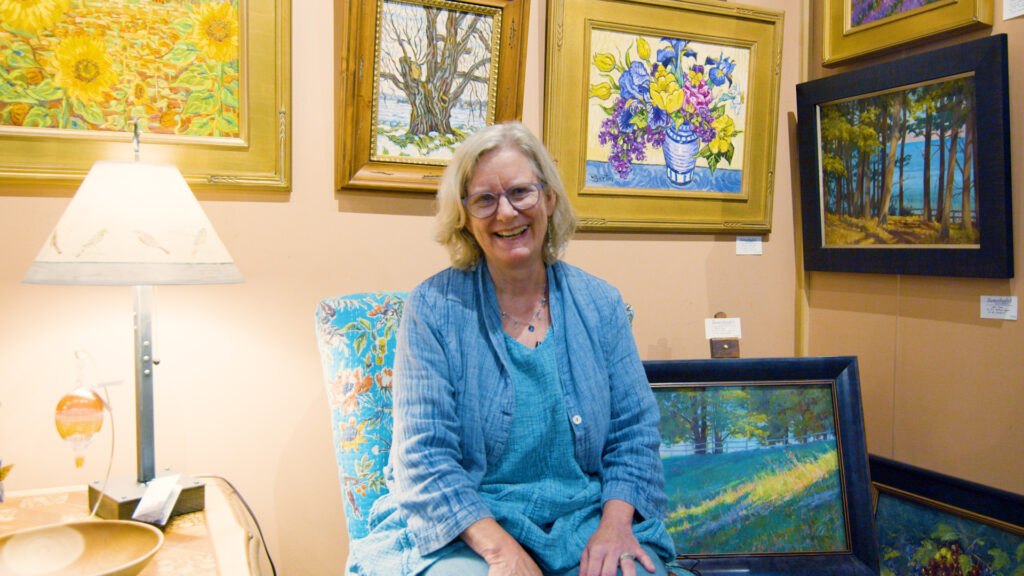When asked what he does, Md Tokon doesn’t call himself an artist. He prefers something simpler: “I always say I’m a painter. I feel good about it.” To Tokon, painting is more than a profession—it’s an identity. The word “painter” holds a weight and clarity that no other label can carry.
Tokon was born in Bangladesh and moved to New York in 2001. He has now spent more than half of his life in the city. “Why am I still making painting to this day? I think God sent me this purpose. This is me. For the rest of my life, I want to live something in this world even when I am not here.”
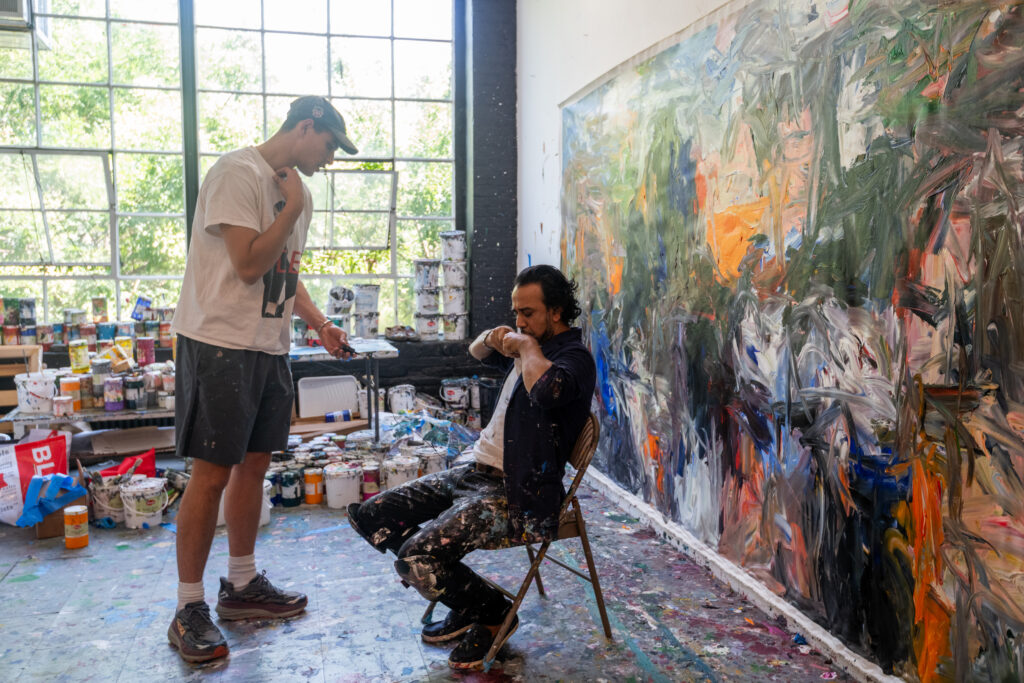
He had painted since childhood, and studied painting at Dhaka University before moving to the United States. But he admits he didn’t really know who he was back then, or what philosophy guided his work. That began to change in New York. He worked as a house painter to provide for his family. “I used to paint the wall, and I felt like this is my canvas.” At the same time, he spent hours visiting museums and galleries. He shared a single room with his wife that served as their bedroom, living room, and studio. Later, he found the Art Students League of New York, a school where Pollock, Rothko, and Barnett Newman once painted. Without a studio of his own, he painted there for years.
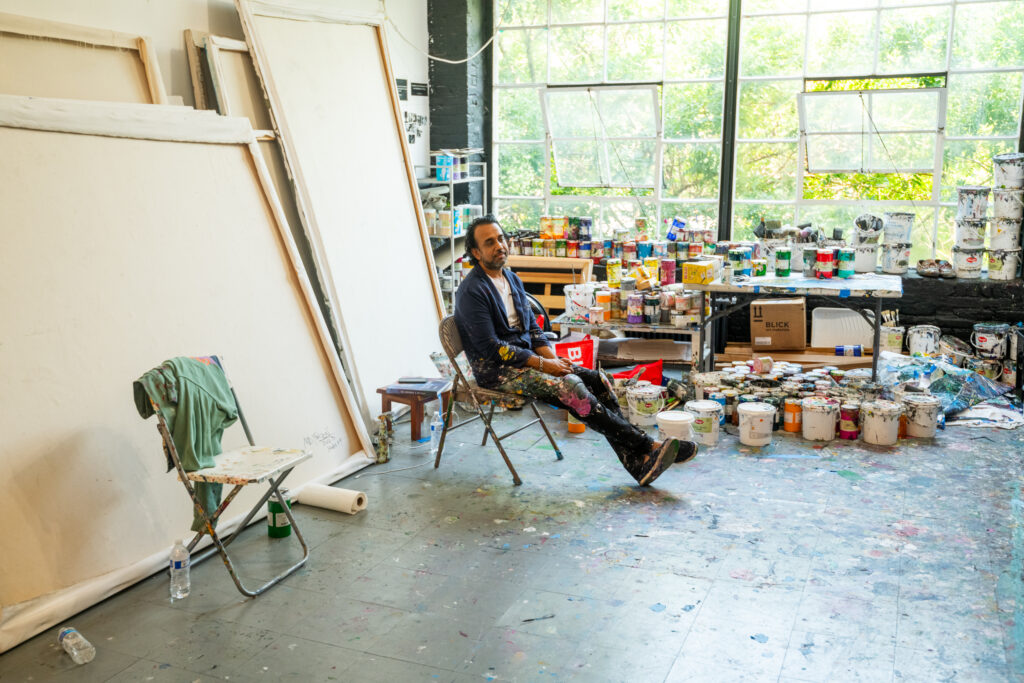
Today, Tokon works out of a studio in a Brooklyn warehouse, drawn to its big windows and light. Moving there has allowed him to “dream a little more” and push himself further. He compares his work to a kind of language: “Art has a language, painting, music, poetry. You have to understand or feel it. But I don’t like when people try to understand too much. I want the viewer to look and search themselves and their own philosophy. Even my philosophy is there too, but they should walk through with the painting.”
His early paintings were more poetic, lyrical, and atmospheric. Now, his work is more gestural, expressive, and charged with energy. “Something not right in the world is coming into me in the painting somehow. Even through the brushstrokes, the color—sometimes sweetness, sometimes angriness. Everything, the energy, it comes into the pieces like that.”
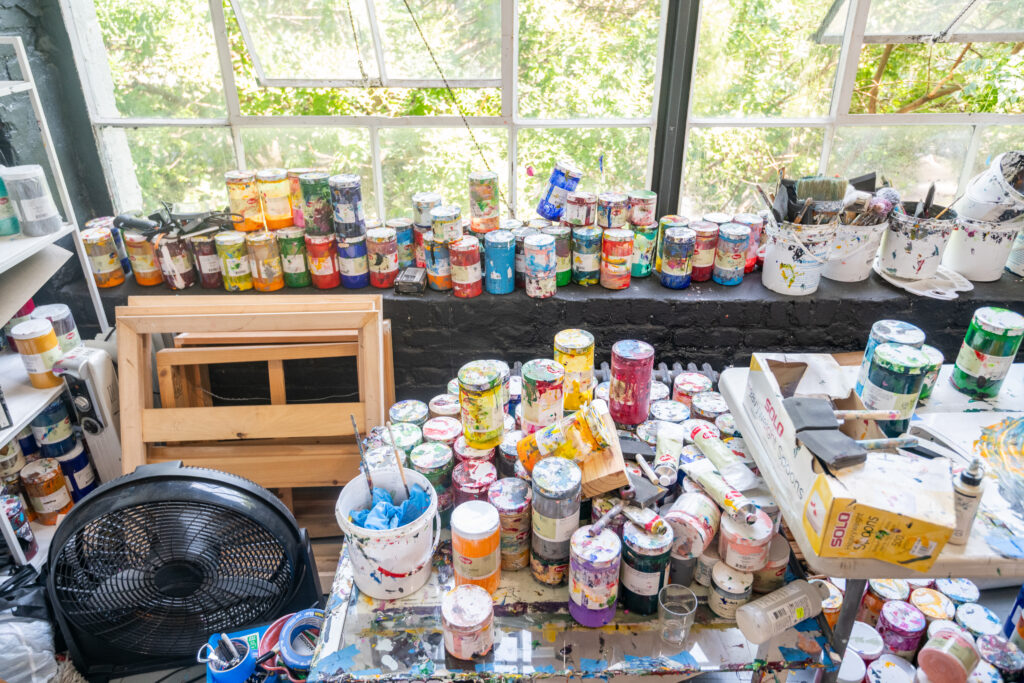
He works mainly with acrylics, the process is physical, like layering mud or soil. “When I was a child, I lived in a house made by mud. The way farmers work the land—it’s the same way I paint. You could feel the mud, you could feel the soil, you could feel the nature inside.”
For years he painted on rolled canvases stacked in his small apartment. Once, his landlord asked if he was running a clothing business because of all the rolls. Some of those canvases remain unopened, waiting to surprise him when he unrolls them years later.
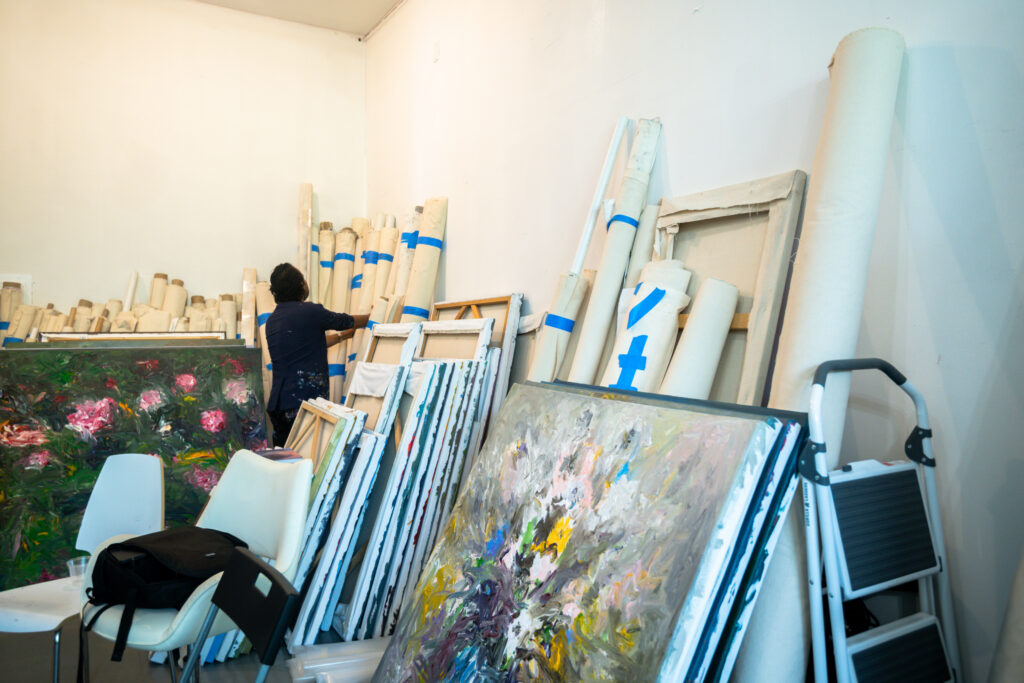
“Early days I used to paint so you could swim in it, and if you were tired, you could lay down on the painting. Now it’s more powerful, more inside out. It’s also like music—playful and energetic, but with a message, something that makes you breathe.”
He dreams of seeing his work in museum collections, and one day establishing a foundation or museum to carry his legacy forward. “Even though I’m not here in this world, I want my pieces to go somewhere in a big collection or museum, or even my own museum, for the next generation.”
In 2023, he returned to Bangladesh for his first solo show there in seven years. A book was published alongside the exhibition, with essays from curators, teachers, and fellow artists who know his work. For Tokon, the publication was a milestone, a way of placing his journey into words.
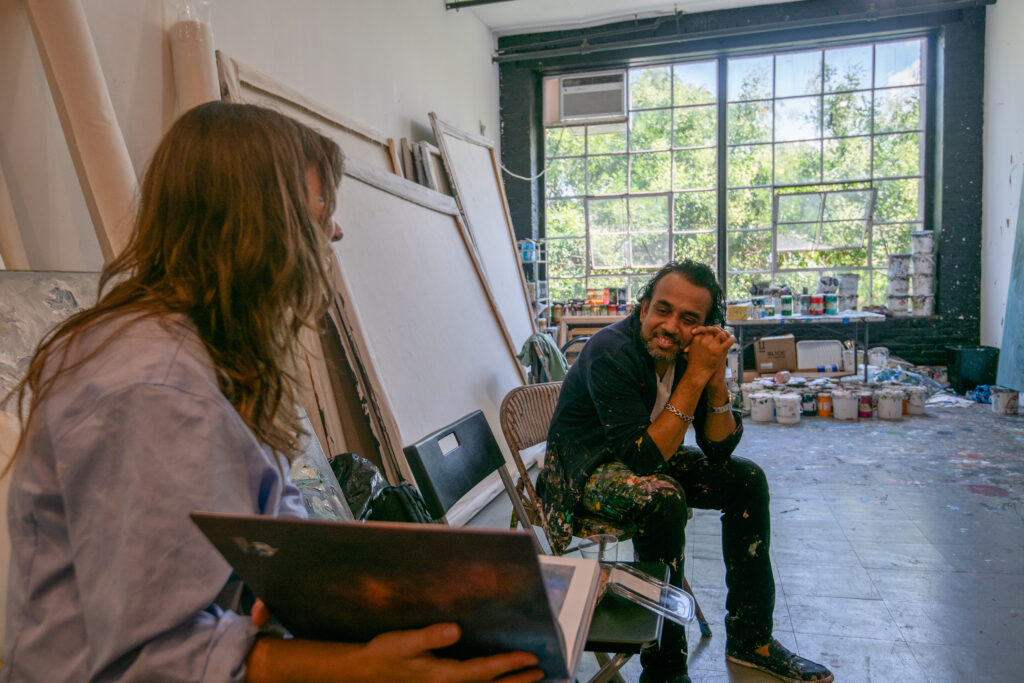
But for him, the work itself always comes first. Goals matter, but they don’t replace the feeling of making a great painting. “When I make a good piece, that makes me more happy than any goal. Everything else follows from that.”
Tokon’s paintings carry both softness and power, history and immediacy, memory and urgency. They are records of a life lived between places, of soil and mud, of color and rhythm, of persistence. “This is me,” he says. “And I’ll be doing this for the rest of my life.”
Help support Timestamp (we’re an Amazon Associate) when you buy art supplies with our affiliate links (we earn a small commission at no extra cost to you):
Shop for Canvas: https://amzn.to/4nG9q1I
Shop for Paint: https://amzn.to/47UVtsh
Shop for Brushes: https://amzn.to/4nJQJdQ
Sebastien Jupille
Sébastien Jupille’s story begins simply. As a kid he drew constantly, not because anyone pushed…
Eva Dixon
From the beginning, Eva Dixon’s relationship to making things was tied to the rhythms of…
Marc Sparfel
Marc Sparfel’s story begins with an act of discovery, the kind that happens quietly, without…
Ruprecht von Kaufmann
In his Berlin studio, Ruprecht von Kaufmann works surrounded by the quiet textures of linoleum,…
Amélie Caussade
Amélie’s journey as an artist began unexpectedly, born from a moment of sudden disruption. In…
Julie Stoppel
Julie Stoppel never planned to become an art teacher, or a gallery owner for that…




